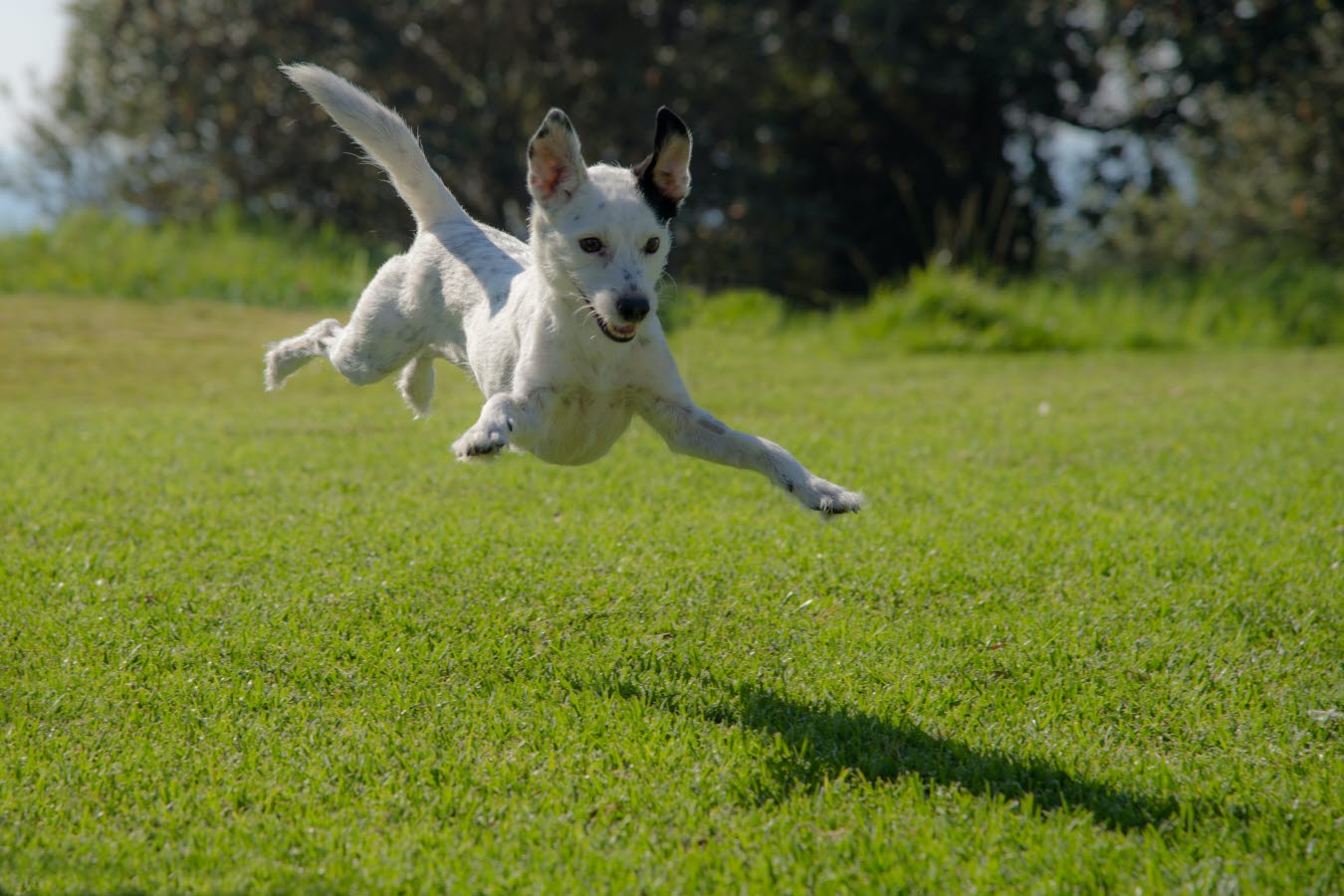Cruciate ligament injuries

We frequently hear of professional athletes damaging the cruciate ligament in their knee, but did you know that dogs (and sometimes cats) can suffer from painful and debilitating cruciate ligament injuries as well?
What is the cruciate ligament?
The cruciate ligament that we refer to in animals is actually the “cranial cruciate ligament” (CCL). This is one of the two main ligaments that stabilises the knee joint from within, to allow the leg to support weight. The CCL helps prevent over-extension (over-straightening) of the knee, and also certain twisting motions that would cause damage to the joint.
How does CCL damage occur?
The CCL may suffer some “wear and tear” as dogs age, especially in very active, middle-aged or older dogs. However, certain large breed dogs unfortunately have a higher likelihood of cruciate disease from two years of age onwards. These breeds include labradors, golden retrievers, rottweilers, boxers and Staffordshire bull terriers. Additionally, any overweight, “couch potato” dog is at higher risk of CCL damage, due to weaker muscles and higher strain on their joints.
How do we diagnose cruciate injuries?
Vets may suspect your pet to have damaged their CCL based on their symptoms. Most commonly, affected animals present in one of two ways:
- They are suddenly unable to walk on one hind limb and it becomes stiff and painful, or they hold it up, often after vigorous exercise (e.g. chasing a ball on the beach) or an accident – this is known as acute cruciate injury;
- They have a history of being a bit stiff and sore in a hind limb (but seeming to recover after several days of rest) until one day this leg becomes lame and very painful – this is known as chronic cruciate injury.
Your vet will need to examine your pet’s limb, feeling for knee pain and swelling, and checking for any joint instability. In many cases, animals will be too uncomfortable and tense to allow a thorough examination whilst awake, so it’s often best that your pet is comfortably sedated or anaesthetised for a proper joint exam with their muscles relaxed.
It’s generally advised that hind limb x-rays are performed at the same time, as this is an effective way of detecting earlier stage chronic cruciate damage (which may be present in both knees!), assessing for arthritis, and ruling out other causes of hind limb pain.
How can we treat CCL injuries?
Treatment of CCL injuries will depend on the severity of the injury and the pets age, breed, weight and level of activity. The veterinarian will discuss the best treatment option suited to your pet’s situation - and this may involve medical management or a surgical procedure.
Various surgical options can be performed to re-stabilise your pet’s knee and significantly improve their comfort, depending on their size and activity levels. All cruciate repair surgeries have particular benefits and risks, so your vet will make the best recommendation for your pet, and pain relief medication will also be part of the management.
Animals that have experienced a CCL injury are more prone to developing arthritis in their injured knee in the future, so your vet will often suggest joint health supplements and arthritis management strategies to keep your pet comfortable in the long-term.
If you suspect that your pet may be showing signs of possible crutiate ligament injury, we recommend that you with your veterinarian for assessment.
